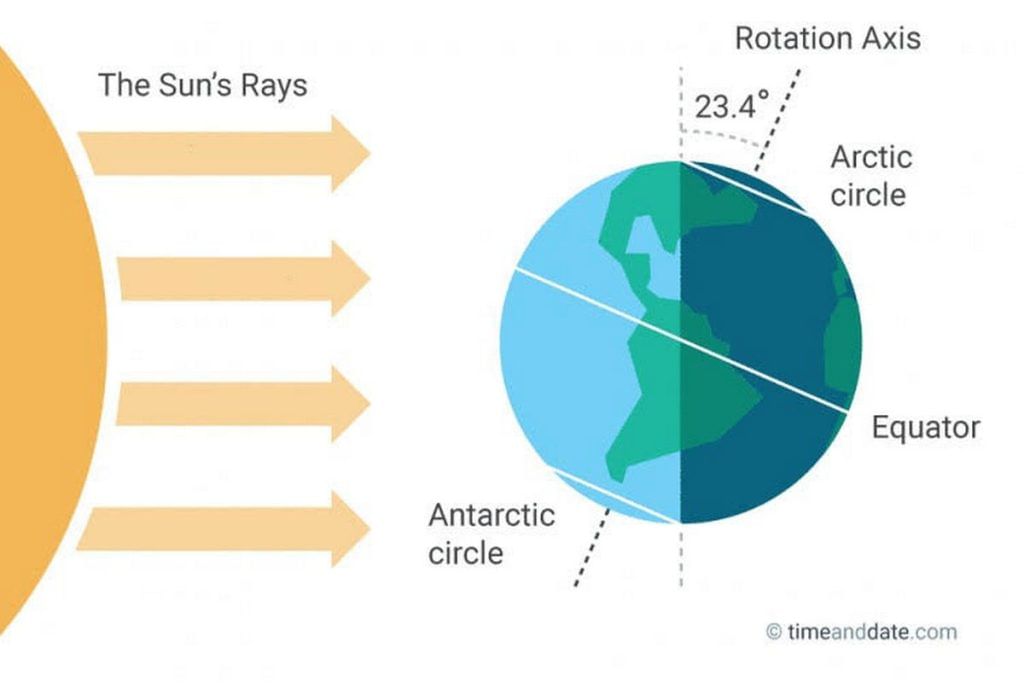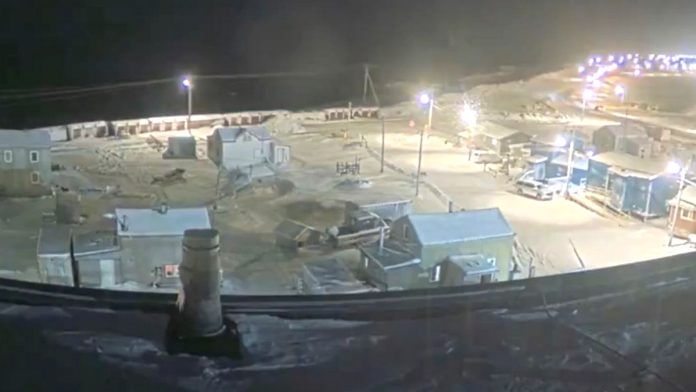New Delhi: Earlier this week, the town of Utqiagvik in Alaska saw its last sunrise and sunset. At least for the next 65 days, it will be shrouded in the darkness of the polar night.
With winter underway in the northern hemisphere, similar phenomena are under way across the Arctic. In northern parts of Norway, Sweden, Finland, Russia and Greenland, daylight is shrinking toward the point where the sun no longer rises for weeks at a time. In Utqiagvik the sun will not rise again until late January. It is also the season when areas near the North Pole see the aurora borealis, commonly known as the Northern Lights.
Meanwhile, at the opposite end of the world, Antarctica is entering a spell of the midnight sun, a polar day that can last for months.
But what are polar days and nights? How do they affect the people living near the poles?
Also Read: Why it took 30 years to declare Delhi’s Southern Ridge a reserved forest
What causes polar nights and days?
Polar night is the period every winter when areas near the North Pole are plunged into darkness for days or even months. The opposite happens in places near the South Pole, which get days of continuous sunlight. Both are caused by the way Earth moves around the sun. Its tilted path leaves some regions in the sun’s shadow while others are bathed in its constant glow.
The Earth revolves around the sun in an elliptical orbit while rotating on its own axis, which is slightly tilted. It’s this tilt that causes the change of seasons. In winter and summer, the poles are either not exposed to the sun at all or are fully exposed to it.

However, many Arctic regions get a brief daily glimmer of light during the polar night.
“Although the sun does not rise during polar night, it gets close to the horizon during midday, and there is a period of twilight,” reads the website of the Alfred Wegener Institute’s Helmholtz Centre for Polar and Marine Research. “The snow reflects the light. On cloudy days, multiple reflections between the snow and the clouds additionally enhance the brightness.”
While polar days and nights have no major impact in the South Pole, since Antarctica has no permanent human settlements, they can disrupt normal life in countries close to the North Pole.
Also Read: Why are children more vulnerable to toxic PM2.5—higher deep-lung deposition rate
How people live through polar nights
The closer a place is to the poles, the longer its polar nights last. In Scandinavian countries such as Norway, Sweden, and Finland, the duration without sunrise varies through the season, but can go up to a month in some parts. In northern Alaska, which is closer to the pole, the darkness lasts for about two months, with the sun setting for the final time in November and rising again only in January.
A National Geographic report in 2024 explored what it’s like to live through a polar night, including in Utqiagvik, where residents have to get through weeks of darkness.
“The polar night can be a profound challenge… The absence of familiar cues and day-night cycles can affect circadian rhythms and disrupt sleep, and the perpetual lack of daylight often saps energy,” the article said.
Different species have evolved different mechanisms to cope with the darkness.
For Arctic animals such as ground squirrels, this is the season to hibernate and re-emerge after the sun rises in January. Other animals, such as reindeer, adapt by developing seasonally blue eyes that help them see better in low light. For polar bears, it’s business as usual although pregnant females dig a den in the snow and enter a state of light hibernation.
For humans, artificial light, strict routines, physical activity, Vitamin D supplements, and attention to mental health can come to the rescue.
“Artificial lamps are used to replicate daylight, and it is crucial to use them at the right time, preferably in the morning. Using the lights too late in the day may disrupt the circadian rhythm,” advised the University Centre in Svalbard, Norway.
However, many residents of Arctic towns report enjoying this time as well, from the spectacle of the Northern Lights to the chance to cosy up for longer at home. One resident of Finland’s Inari even told BBC that the Arctic night wasn’t long enough. A 2020 study on the “wintertime mindset” in Norway in the International Journal of Wellbeing pointed out that attitude can play a big role when it comes to dealing with darkness.
“A positive mindset towards winter is strongly associated with wintertime wellbeing, including satisfaction with life,” it said.
(Edited by Asavari Singh)






